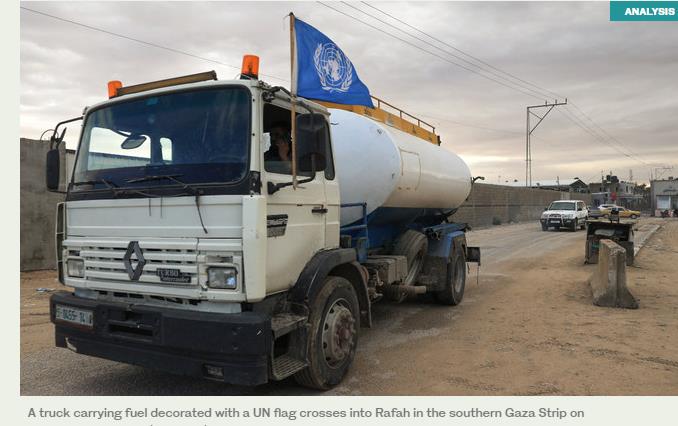
Close to 2 million people live under siege in the Gaza Strip. The siege, which is actually a military blockade, has lasted for more than 11 years, since Hamas took power in the tightly packed coastal enclave. Over that period, Israel has attempted to break Hamas’ hold on power and failed. While Israel’s official rhetoric belies a different narrative, it has, in recent weeks, quietly engaged Hamas in order to quell a popular rebellion that threatens the dreadful status quo in Palestine. Now, however, Israel and Hamas are — counterintuitively — marching toward war in order to ensure that those popular protests are taken out of the spotlight.
Sometime around this year’s Land Day holiday on March 30, tens of thousands of people began confronting Israeli soldiers on Gaza’s border. Sometimes armed with stones, Palestinians from all walks of life approached the heavily fortified border on Friday afternoons after weekly prayers. Men, women and children joined the movement as it ballooned in size. Throughout the summer, these protesters risked everything to confront soldiers at the border. Nearly two-thirds of Gazans are refugees or the descendants of refugees. Thus, it is no wonder that the symbolism of Land Day and the annual commemoration of the founding of the state of Israel was the spark for a series of protests that became known as the “Great March of Return.”
Israel was quick to blame Hamas for the protests. Remarkably little credit was given to ordinary Gazans for their role in this fresh struggle tactic. In fact, the protests, which have died down dramatically but still continue to draw thousands, represent a third force in Gaza. They began as a popular movement organized by an exhausted people. Such protest movements are not new in Palestine but they have all been co-opted by larger political bodies at different times, including the Palestinian Authority (PA), Hamas and Israel.
Both Israel and Hamas — the forces with the most to lose from a genuine popular rebellion in Gaza — have failed to engage this movement, to understand the core motives that propel it or to evaluate its future. The protesters didn’t risk life and limb because Hamas told them to; they confronted Israel because they have nothing left to lose. After a decade living in crushing poverty and isolation, the majority of Gazans are simply fed up — with everyone.
The majority of Gazans want day-to-day life in the Strip to improve, yet Israel as the occupier is unable or unwilling to work with this majority to achieve this simple goal.
Joseph Dana
Israel’s initial response to the protests was unsurprising, but it was swift. It immediately responded with the type of military force that casts the protests as a security challenge devised by Hamas tacticians. Instead of engaging with the protesters as a civilian population with legitimate grievances against the siege and against Hamas’ leadership, Israel viewed them as an armed threat.
Despite killing and wounding thousands of protesters, the military response has done little to crush the core backbone of the movement. Until this week, at least, Israel focused on easing living conditions in Gaza. That is the most remarkable storyline of the Great March of Return, and also the one receiving the least coverage.
With Egypt’s help, Israel and Hamas worked out an arrangement to increase fuel imports into Gaza, pay salaries for civil servants and approve permits for up to 5,000 Gazans to work in Israel. Even more surprising is the fact that Israel has not renewed demands for Hamas to hand over physical control of border crossings or tax collection to the PA, despite loud calls from President Mahmoud Abbas. These are sticking plasters on a much larger wound but, given the horrific humanitarian situation in Gaza, they can’t be overlooked.
In the view of one Israeli commentator, Israel had been using indirect talks with Hamas about ending the protests to address the concerns of the Gazan majority. But that is a major mistake and one that reveals the terrible political reality in Israel and Palestine. The majority of Gazans want day-to-day life in the Strip to improve, yet Israel as the occupier is unable or unwilling to work with this majority to achieve this simple goal. It prefers instead to use corrupt and inefficient Palestinian interlocutors such as the PA and Hamas to maintain its occupation.
But all these efforts will move to the backburner if the recent escalation between Hamas and Israel intensifies. After a botched operation by Israeli special forces last week, the cycle of Hamas rockets and Israeli airstrikes came back to hog the headlines and virtually remove the prospect of more popular non-violent protests along the border (the two sides agreed to an Egyptian-mediated truce on Tuesday.)
The Great March of Return demonstrated the power of popular mobilization to break the status quo. Or at the very least it had the potential. It has also highlighted the degree to which Israel understands how to quell protests through military action; the coercion of Palestinian political platforms; the maintenance of its sophisticated matrix of control over Palestinian life; or a combination of all three. Israel’s position of power has never been stronger, and the suffering of the Palestinian people never more pronounced.
Joseph Dana, based between South Africa and the Middle East, is editor-in-chief of emerge85, a lab that explores change in emerging markets and its global impact. Copyright: Syndication Bureau www.syndicationbureau.com
Disclaimer: Views expressed by writers in this section are their own and do not necessarily reflect Arab News" point-of-view










